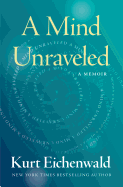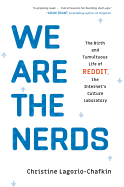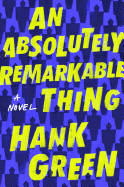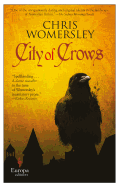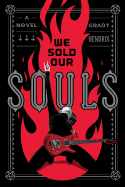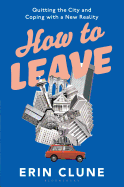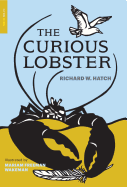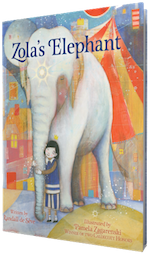Tuesday, October 16, 2018
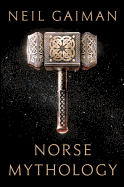 Norse mythology and history are having something of a cultural moment. From hit TV shows such as Vikings to the enormously successful video game God of War, Scandinavian culture has been finding a larger place in the popular imagination. In the literary world, Neil Gaiman's Norse Mythology (Norton, $15.95) offers an approachable introduction for children and adults to Thor, Odin, Loki and many more legendary characters who--believe it or not--are far more interesting than their counterparts from the Marvel movies. Gaiman's appreciation for Norse mythology has been apparent in many of his books, especially in the beloved American Gods (Morrow, $19.99), and here he turns his enthusiasm and storytelling abilities to the dark, weird myths that inspired characters like Mr. Wednesday.
Norse mythology and history are having something of a cultural moment. From hit TV shows such as Vikings to the enormously successful video game God of War, Scandinavian culture has been finding a larger place in the popular imagination. In the literary world, Neil Gaiman's Norse Mythology (Norton, $15.95) offers an approachable introduction for children and adults to Thor, Odin, Loki and many more legendary characters who--believe it or not--are far more interesting than their counterparts from the Marvel movies. Gaiman's appreciation for Norse mythology has been apparent in many of his books, especially in the beloved American Gods (Morrow, $19.99), and here he turns his enthusiasm and storytelling abilities to the dark, weird myths that inspired characters like Mr. Wednesday.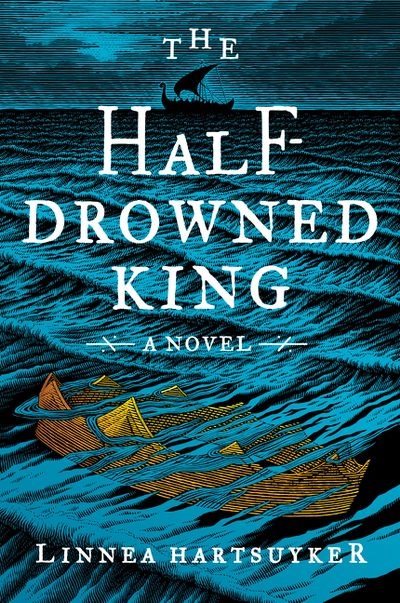 In historical fiction, I would recommend Linnea Hartsuyker's The Half-Drowned King (Harper, $15.95), the first book in an ambitious trilogy about Viking-era Norway, and Bernard Cornwell's Saxon Chronicles (HarperCollins), an extensive series about the ninth-century Viking invasion of what would become England.
In historical fiction, I would recommend Linnea Hartsuyker's The Half-Drowned King (Harper, $15.95), the first book in an ambitious trilogy about Viking-era Norway, and Bernard Cornwell's Saxon Chronicles (HarperCollins), an extensive series about the ninth-century Viking invasion of what would become England. Some of the best historical fiction about the Norse can be found in comics and manga, from Brian Wood's epic Northlanders (Vertigo, $16.95) to Makoto Yukimura's Vinland Saga (Kodansha, $19.99). Northlanders is best approached as a series of short stories or novellas in settings as diverse as the Orkney Islands and Iceland, often focusing on the colonizing efforts of the far-travelling Norse. Illustrated by a number of personal favorites including Fiona Staples and Becky Cloonan, Northlanders is not to be missed. Vinland Saga is a lengthy, winding story eventually concerned with Viking efforts to settle in North America. Yukimura tells a well-researched story rich in visual detail. It's wonderful to see Norse culture celebrated in so many different mediums by so many talented authors, and to have simplistic depictions of Viking barbarians replaced by a more nuanced picture. --Hank Stephenson, bookseller, Flyleaf Books, Chapel Hill, N.C.
Some of the best historical fiction about the Norse can be found in comics and manga, from Brian Wood's epic Northlanders (Vertigo, $16.95) to Makoto Yukimura's Vinland Saga (Kodansha, $19.99). Northlanders is best approached as a series of short stories or novellas in settings as diverse as the Orkney Islands and Iceland, often focusing on the colonizing efforts of the far-travelling Norse. Illustrated by a number of personal favorites including Fiona Staples and Becky Cloonan, Northlanders is not to be missed. Vinland Saga is a lengthy, winding story eventually concerned with Viking efforts to settle in North America. Yukimura tells a well-researched story rich in visual detail. It's wonderful to see Norse culture celebrated in so many different mediums by so many talented authors, and to have simplistic depictions of Viking barbarians replaced by a more nuanced picture. --Hank Stephenson, bookseller, Flyleaf Books, Chapel Hill, N.C.Unsheltered
by Barbara Kingsolver
Discover: Barbara Kingsolver's ambitious novel follows characters in different centuries as they undergo seismic cultural shifts.
An Absolutely Remarkable Thing
by Hank Green
Discover: In this insightful and funny novel, a young woman experiences sudden fame when mysterious statues appear around the world.
Listen to the Marriage
by John Jay Osborn
Discover: Step into the sacred space of a counselor's office to "listen in" on the slow, intricate, session-by-session repair of one deeply damaged marriage.
City of Crows
by Chris Womersley
Discover: A mother and her mysterious new acquaintance search for her kidnapped son in 17th-century Paris.
Mystery & Thriller
We Sold Our Souls
by Grady Hendrix
Discover: In this supernatural horror novel, a washed-up heavy metal guitarist seeks the truth about a fateful night that changed her life.
Food & Wine
Gordon Ramsay's Healthy, Lean & Fit: Mouthwatering Recipes to Fuel You for Life
by Gordon Ramsay
Discover: Celebrity chef Gordon Ramsay shares recipes with an eye toward health and wellness.
Biography & Memoir
A Mind Unraveled: A Memoir
by Kurt Eichenwald
Discover: An esteemed journalist brings his considerable skills to the story of his battle with epilepsy.
Social Science
We Are the Nerds: The Birth and Tumultuous Life of Reddit, the Internet's Culture Laboratory
by Christine Lagorio-Chafkin
Discover: This illuminating history of Reddit reveals the website's significant influence on American culture, including the 2016 presidential election.
Religion
Almost Everything: Notes on Hope
by Anne Lamott
"Some days there seems to be little reason for hope, in our families, cities, and world," admits essayist Anne Lamott (Hallelujah Anyway; Bird by Bird). "Well, except for almost everything." That exception is the impetus for Lamott's essay collection Almost Everything: Notes on Hope. Lamott, who has made a career out of facing the darkness and then looking for the pinpricks of light, brings her pithy, self-deprecating humor to bear on such topics as a friend's alcoholism, the power of stories to redeem and transform and the ways grace sneaks in: without warning and against all expectations.
In brief, wry chapters on topics such as "Puzzles" (not the 500-piece kind), "Humans 101" and "Famblies," Lamott explores the complicated truth of "the mess and the tenderness"--the ordinary human condition, shot through with despair and joy. This takes the form, at times, of sticking with friends and family members through illness and death; learning to treat ourselves and our bodies with kindness; and struggling not to give in to hate in a fear-filled political climate. It also can mean glancing out the window at a bird, laughing (kindly) at ourselves and simply being willing to be amazed.
On the days when "it doesn't feel like the light is making a lot of progress," Lamott also recognizes that "love has bridged the high-rises of despair we were about to fall between." Fortunately for Lamott's readers, this book, like her others, is both a celebration of that bridge and a gentle but insistent call to keep building. --Katie Noah Gibson, blogger at Cakes, Tea and Dreams
Discover: Anne Lamott's essays on hope offer pithy, straight-shooting insights in times of despair.
Psychology & Self-Help
How to Leave: Quitting the City and Coping with a New Reality
by Erin Clune
Discover: Relocating is difficult, but Erin Clune's humorous advice can make that transition a little easier.
Children's & Young Adult
The Curious Lobster
by Richard W. Hatch, illus. by Marion Freeman Wakeman
Discover: Mr. Lobster has charmingly old-fashioned adventures exploring the land with friends Mr. Badger and Mr. Bear in this reissue of Richard W. Hatch's Mr. Lobster stories.
Buried Beneath the Baobab Tree
by Adaobi Tricia Nwaubani and Viviana Mazza
Discover: This fictional account of one girl's tragedy takes inspiration from interviews with Nigerian schoolgirls abducted by the extremist group Boko Haram in 2014.
Zola's Elephant
by Randall de Seve, illus. by Pamela Zagarenski
In Randall de Sève and Pamela Zagarenski's first picture book collaboration, a nameless young girl imagines that her next-door neighbor lives in a stunning, vibrant world... with a pet elephant. Intricate and beautiful, Zola's Elephant displays a perfect balance of text and illustration while asking all readers to remember that what we think isn't necessarily what is true.
A young girl looks out the window at a family moving in next door. A mini, apple-cheeked Pierrot, the girl is dressed whimsically in harlequin-style red-and-white checked pants and a ruffled collar, holding a toy elephant wearing a red-and-white striped hat identical to the one atop her pigtails. The new next-door neighbors stand in front of a massive stack of boxes while, in the background, two movers struggle with a large crate marked "fragile."
"There’s a new girl next door," the girl's narration begins. "Her name is Zola. I know because our mothers met this morning and decided we should be friends. But Zola already has a friend. I know because I saw the big box." One might wonder what kind of friend would arrive in a "big box" but the girl is certain she knows what it is: "You need a big box to move your elephant."
Peering through the window, the girl imagines an elephant curled up inside the enormous box. The acrylic-on-wood illustration depicts her imaginary world in the colors of a nebula, everything in shades of blue, green and gold. An otherworldly star chart overlays, with words like "magic" or "believe" in place of the more common words like "equator" or "elliptic."
The nebula-like palette continues onto the next spread as the Zola she imagines throws slices of toast to her elephant: "You also need to feed your elephant as soon as it arrives.... I know Zola's feeding her elephant now because I smell toast. Lots of toast." But the next page turn shows the reader what's really happening. The glorious colors are gone, replaced by doleful blues and grays. Zola sits alone, using the big box as a table for her toast and tea. With the next page turn, we are again back in the world of imagination. This back and forth continues as the reader is shown the glorious, fanciful scenes the narrator's mind creates as she comes up with excuses to not go meet Zola and her elephant. Hearing hammering, she imagines Zola and her elephant are building a clubhouse; in reality, an adult is assembling furniture while Zola holds her hands over her ears.
The narrator is sure Zola's clubhouse is "very cozy with pillows and curtains and a carpet of stars.... Perfect for sharing stories." And, in her imagination, it is: the clubhouse looks like a circus tent and Zola naps tucked into the elephant's trunk. "I like stories," she thinks, "and clubhouses and playing hide-and-seek and taking bubble baths with elephants. I really like elephants." And so, there are no more excuses--she simply must meet Zola and her elephant.
The narrator walks across the yard to Zola's front door and knocks. The girl is invited in, only to discover that there is no elephant--the box holds a couch. "Okay, so maybe Zola doesn't have an elephant. But do you know what she does have? A new friend."
Bestselling author Randall de Sève worked on Zola's Elephant for years, trying Zola many different ways, "including using alternating narrators." When "the versions got too tangled up," she "put the story away for a while" to clear her head. When she returned to Zola and her elephant, she simplified the story, creating the delightful and concise narrative Zola is now. Caldecott Honoree (Sleep Like a Tiger) Pamela Zagarenski's striking acrylic on wood illustrations work perfectly with the text, telling both the written story and the story in between. Of Zagarenski's illustrations, de Sève said, "I don't even know where to begin gushing: Perhaps at the vibrant colors and endless patterns on every page... the stark contrast between real... and imaginary... worlds, the timeless designs of costumes and architecture, the compositions that keep your eyes moving and searching and never growing tired... Or how brilliantly Pamela imagined this short but complex story."
And complex the illustrations most certainly are: visual themes travel from page to page; there are secondary and tertiary storylines in the illustrations and in the interwoven designs; and the endpapers expand upon de Sève's tale. "I always imagine endpapers as pictorial extensions of the story," Zagarenski said. "While I painted these pages I personally experienced the 2017 solar eclipse. It felt like a larger-than-life event." Zagarenski included the sun, the moon and the stars throughout the picture book to build on that event and as a "reminder" of "our constant and mysterious companions." In the endpapers, she painted the sun, the moon and the eclipse in the sky, "both day and night happening simultaneously."
Zola's Elephant's easy-to-read text gives many access points to young readers while the material itself poses grander questions for older readers to mull over. Zagarenski's illustrative interpretation of the text is as vibrant and intricate as the text itself, certain to draw in pre-readers and readers alike. A deceptively simple tale, Zola's Elephant has depth to consider and explore. --Siân Gaetano, children's and YA editor
| Advertisement Meet belle bear! |


